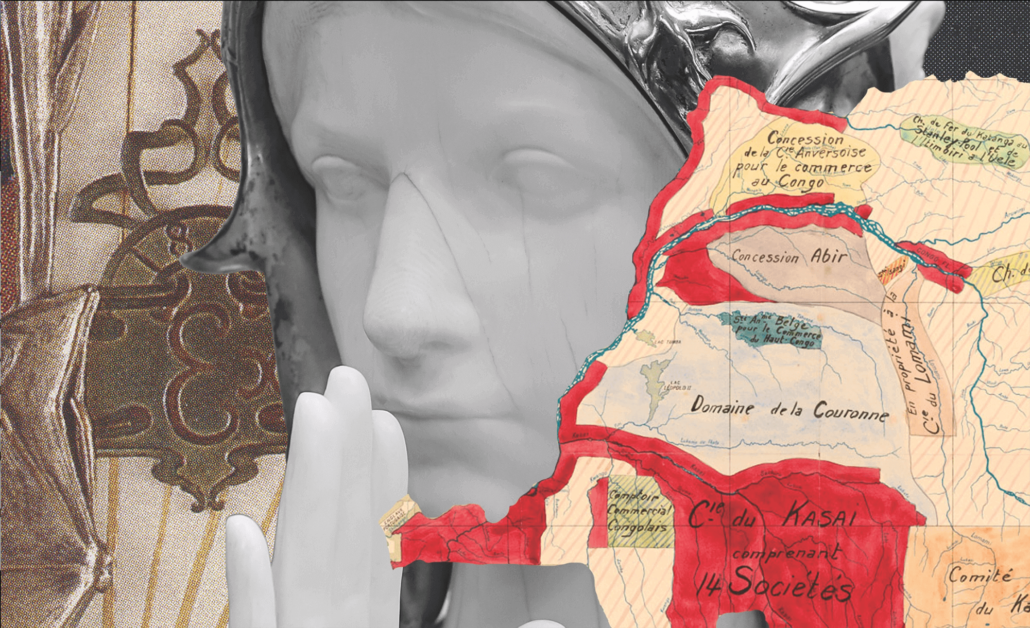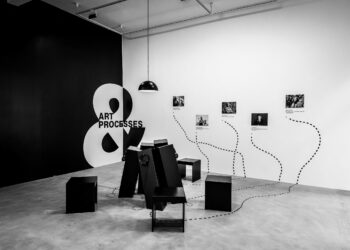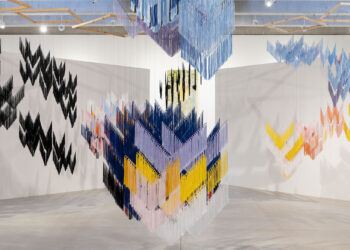‘Congo-style. Heritage & Heresy’ studies the policy of representation and cultural appropriation through contemporary artistic and architectural interventions as well as historical documents from the collections of the CIVA.

© ayoh kré Duchâtelet
The exhibition, curated by Sammy Baloji, Silvia Franceschini, Nikolaus Hirsch and Estelle Lecaille, tells how the Congo has been represented in international exhibitions and colonial events organised between 1885 and 1958, with Art Nouveau as an anchor.
With the participation of Judith Barry, Rossella Biscotti, Peggy Buth, Ayoh Kré Duchâtelet, Jean Katambayi, Johan Lagae & Paoletta Holst, Chrystel Mukeba, Daniela Ortiz, Ruth Sacks, and Traumnovelle. With a selection of works by Ernest Acker, Victor Bourgeois, Joseph Caluwaers, Jean-Jules Eggericx, Paul Hankar, Georges Hobé, Victor Horta, Henry Lacoste, René Pechère, Fernand Petit, René Schoentjes, and Gustave Serrurier-Bovy.
The Belgian movement – also called Style Congo at the time – coincides with the exploitation of the Congo by King Leopold II and reflects a widespread fascination with materials and “exotic” forms. As total works of art, the pavilions of international and colonial exhibitions illustrate the synthesis of the arts to which modernism aspired, not only through architectural form and the applied arts, but also by the fusion between the scenography and the collections presented, thus creating a precedent for the provisions of displays in ethnographic museums. Through their captivating constructions and seductive references, the pavilions – utopian each in their own way – conveyed a double idea of the Congo: a lucrative African colony and field creative for Belgian artists and architects. Flaunting both authenticity and progress, these pavilions served as a platform for cultural propaganda and economic exchanges.
Contemporary artistic and architectural positions within the exhibition challenge the stories of canonical and colonial roots of this heritage and from the perception of buildings that have become icons of Belgian culture. By examining the marks of colonisation in the city of Brussels and the Congolese urban landscape, they suggest a decolonial re-signification of spaces, private and public, striving to rewrite history on the margins to bring it back to the centre.
The exhibition is on view form the 17th of March until the 3rd of September, 2023. For more information, please visit CIVA.



